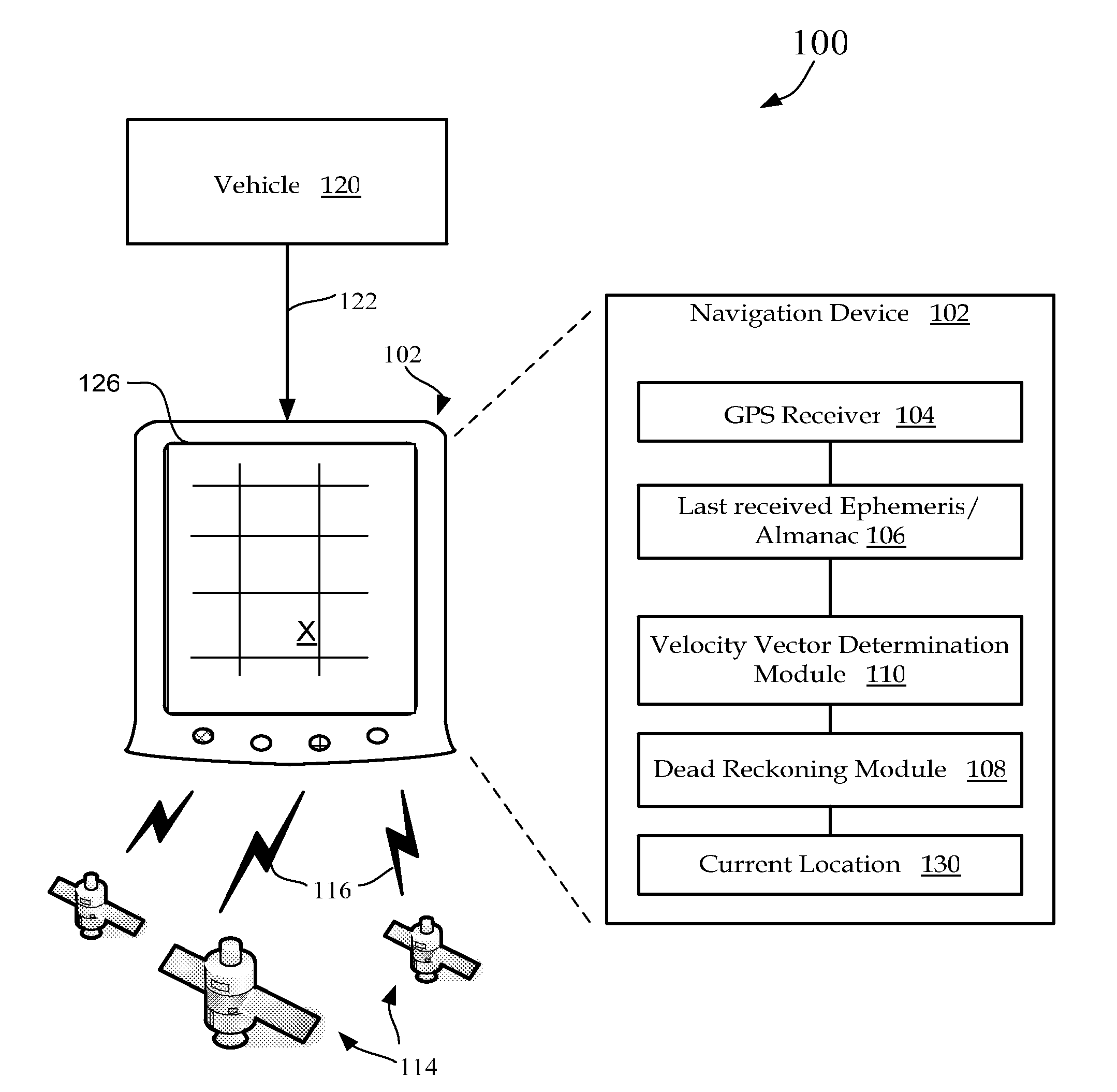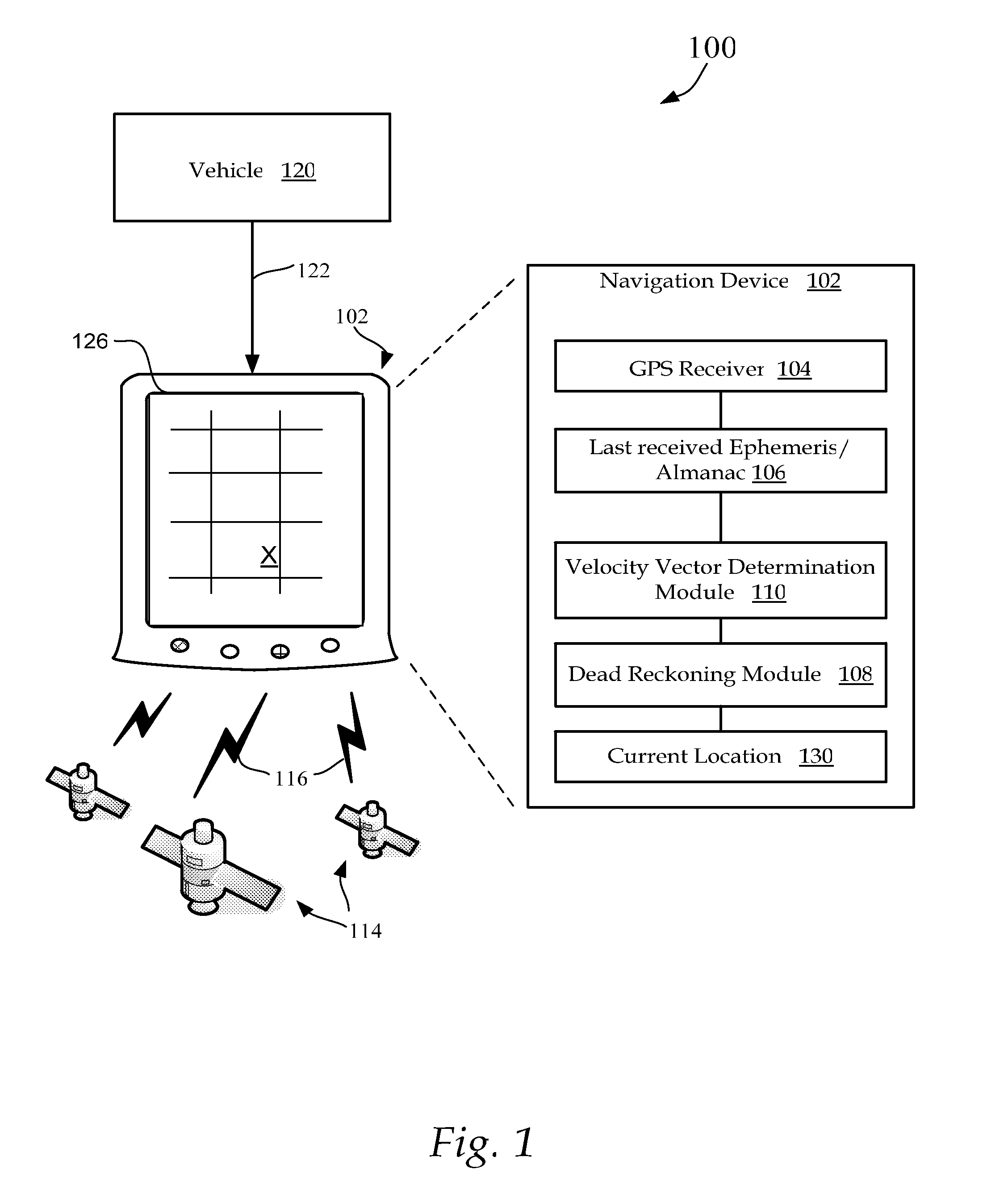Method and system for navigation using GPS velocity vector
a technology of gps and velocity vector, applied in the field of navigation services for computing devices, can solve the problems of user waiting at least, wasting time, and wasting time, and achieve the effect of accurate calculation
- Summary
- Abstract
- Description
- Claims
- Application Information
AI Technical Summary
Benefits of technology
Problems solved by technology
Method used
Image
Examples
Embodiment Construction
[0024]FIG. 1 illustrates one embodiment of a GPS navigation system 100 that includes a vehicle mounted navigation device 102 that receives a GPS signal 116 containing GPS position location parameters from several satellites 114 orbiting the earth at a distance of approximately 20,000 kilometers. In some embodiments, the navigation device 102 derives continuous power from a vehicle connected cable 122. In other embodiments navigation device 102 is powered only when the vehicle's ignition is on.
[0025]Based upon the received parameters, navigation device 102 determines its respective three dimensional position and velocity using very precise location parameters and timing signals received from the satellites 114. upon determining a current location 130, navigation device 102 is operable to display a position of the vehicle 120 on a display device 126.
[0026]GPS vehicle position is normally derived from the pseudo-range measurements from three or more satellites, the pseudo-range measure...
PUM
 Login to View More
Login to View More Abstract
Description
Claims
Application Information
 Login to View More
Login to View More - R&D
- Intellectual Property
- Life Sciences
- Materials
- Tech Scout
- Unparalleled Data Quality
- Higher Quality Content
- 60% Fewer Hallucinations
Browse by: Latest US Patents, China's latest patents, Technical Efficacy Thesaurus, Application Domain, Technology Topic, Popular Technical Reports.
© 2025 PatSnap. All rights reserved.Legal|Privacy policy|Modern Slavery Act Transparency Statement|Sitemap|About US| Contact US: help@patsnap.com



